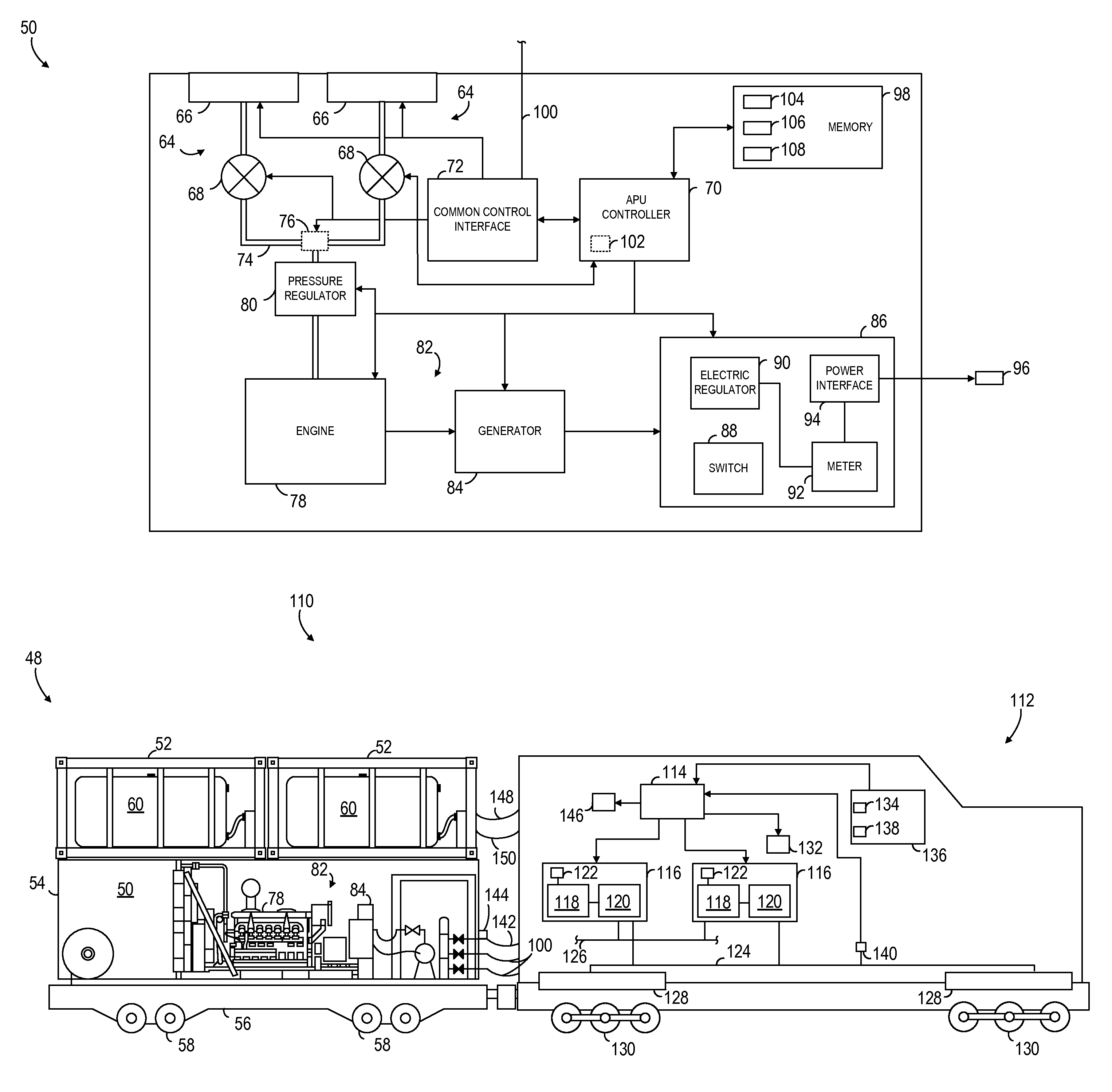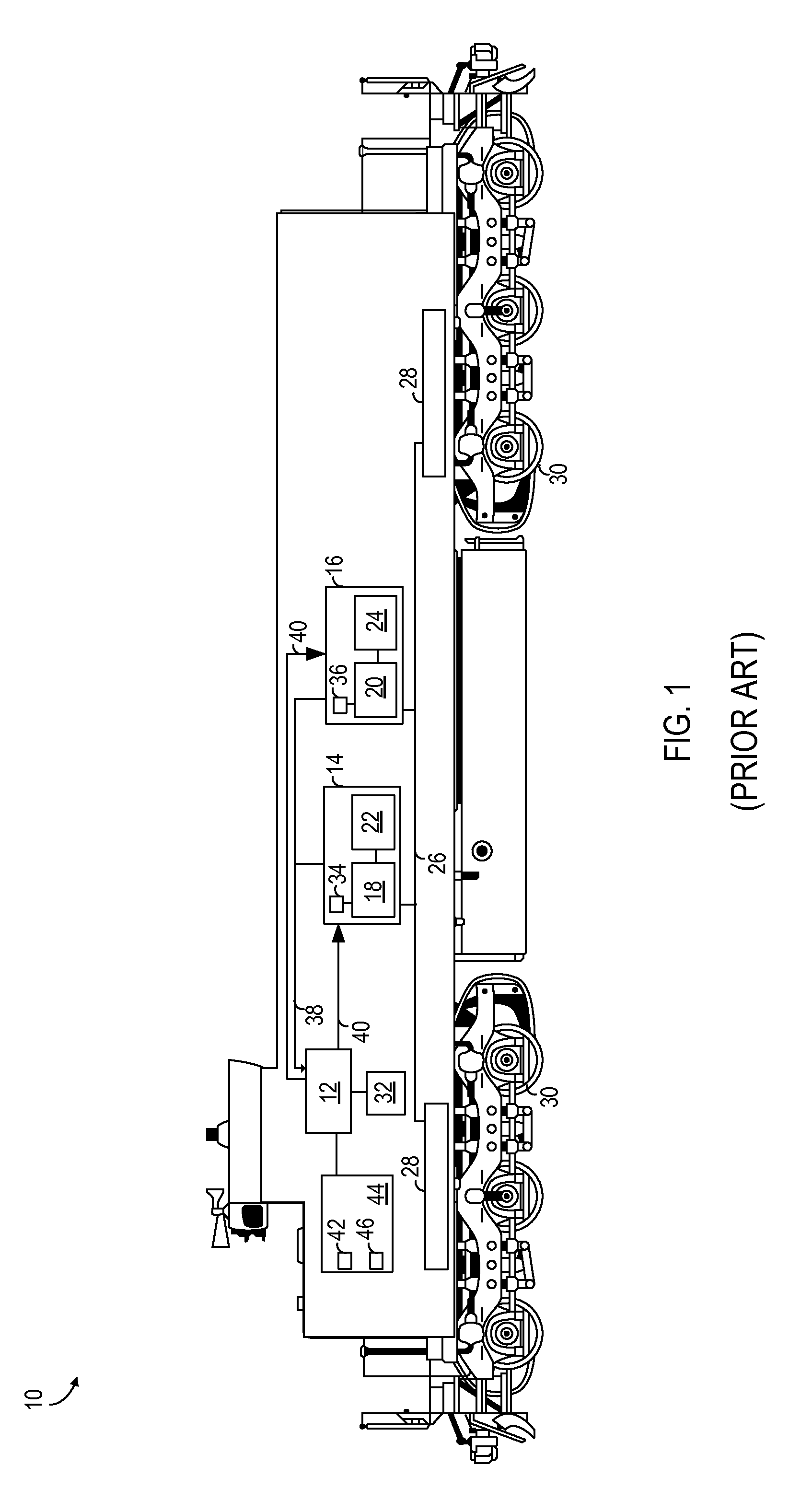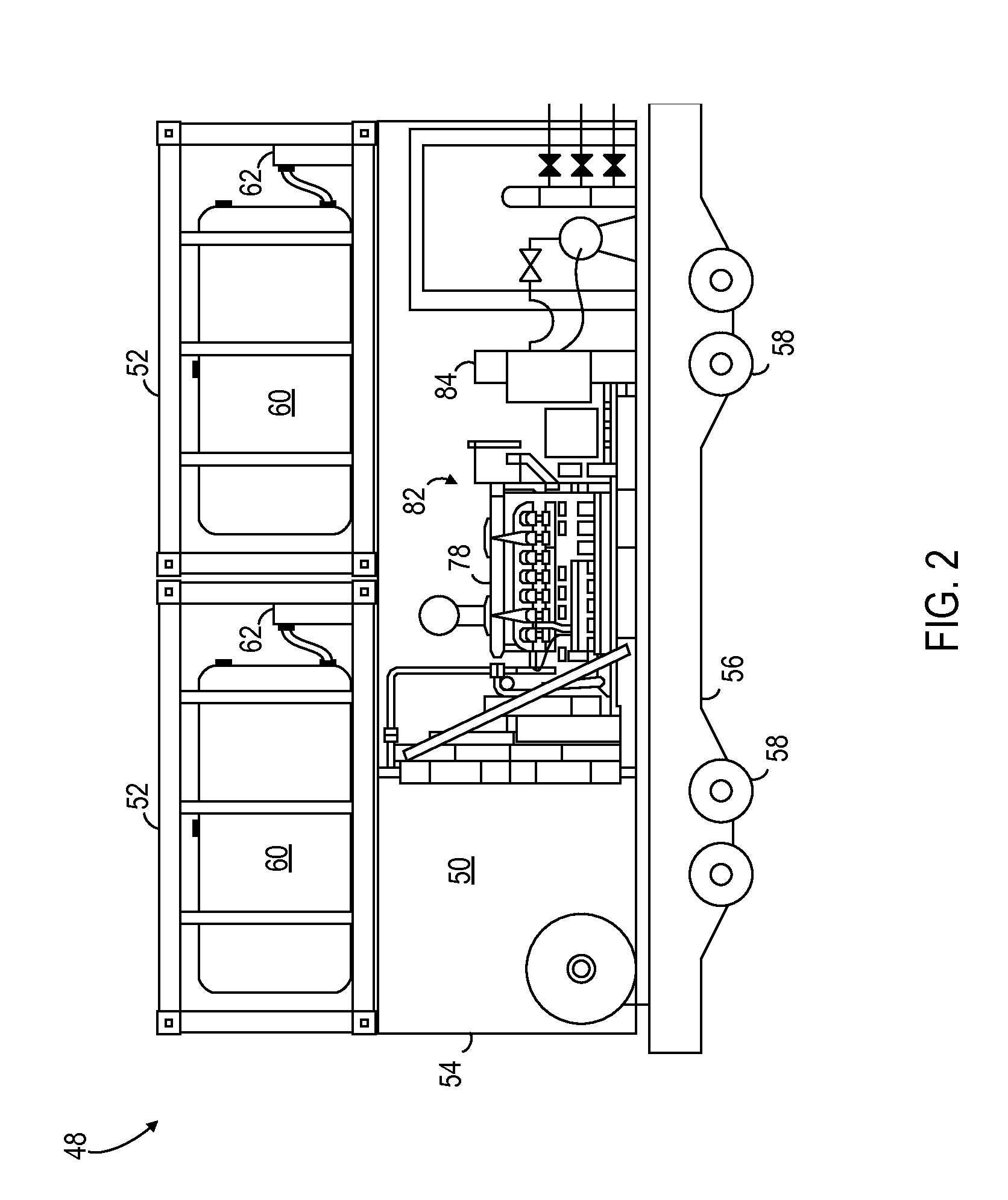However, these approaches are of limited utility and are generally not practiced due to harsh operating conditions that limit the ability to distribute locomotive functions across disparate
chassis as well as the technical challenges of integrating stock railroad equipment with locomotives.
These static arrangements have failed due to the lack of operational flexibility required for day-to-day operation of locomotives and / or operational limitations (such as locomotive range, power production limitations, and requiring support for multiple fuel sources).
In particular, “genset” style locomotive controllers have not found use in line haul applications because they produce lower overall power than a single, large engine.
Use of dissimilar power source arrangements have failed due cost and operational issues.
Known locomotive controllers also fail to address unexpected signals and operational challenges that become evident when extending the locomotive control and power systems between disparate railcar
chassis and integrating power from these external sources with power produced by the engine / generator(s) on the locomotive
chassis.
As a result, many locomotive power tender configurations have been tried and abandoned due to a number of operational, safety, and related technical issues.
Each rail car is approximately 100 feet in length, and
signal degradation, electro-magnetic interference, propagation delays, and related issues are factors when operating a power tender and locomotive together.
Second, extending the power bus (sometimes called a fraction bus) between railcars presents similar concerns, not with the signal degradation, but with the cabling and switching apparatus used to safely transport high amperage currents (e.g., 2000 amps) between the power tender and the locomotive fraction bus.
Power losses, in particular,
voltage losses, arcing, and related issues come into play.
Since locomotive power blending is governed by the
voltage of the provided power, and is characterized by tight control of the
voltage provided to the power bus, losses in voltage or current between a power tender and the locomotive will cause the locomotive controller to improperly manage the combined locomotive / tender.
In some cases, these losses will cause the locomotive to not operate.
Third, locomotives and attached power tenders operate in harsh environments.
The physical challenges are many and varied; they include widely varied operating temperatures, weather, poor electrical connections between the locomotive and the tender, etc.
The control and sensor data is subject to intense electro-magnetic environments (that disrupts the control and sensor data) both external to the consist and within the infrastructure.
The shielding required to mitigate these issues described above is itself susceptible to the physical challenges, and degrades over time.
Operating a locomotive / power tender in these conditions is challenging.
Fourth, locomotives and their attached power tenders may encounter operational issues, such as connector failure, cable separation, or even chassis separation during regular operation (for example, as would be caused by a coupler failure).
Given the complex nature of locomotive control and the interrelatedness of locomotive loads such as traction motors and blowers, a locomotive's controller, its engine-generator, and an external power tender cannot “share” the generation requirement, with a portion of the power coming from the engine-generator, and remainder of the power coming from the external power tender without the locomotive controller being aware of the power tender and the amount of power it produces.
Since other locomotive systems are often tied to the locomotive engine-generator or are utilized proportionally to the amount of power being used by locomotives loads (e.g., blowers, aux power), this results in a non-functioning locomotive.
Specialty locomotive controllers that are aware of multiple power sources also have challenges operating with external power tenders.
Also,
specialty controllers have the operational constraints of each
specialty power source hard-coded into their logic and
electronics, making changes to the power source configuration hard to impossible.
Genset locomotive controllers do not account for the operational issues described above, which lead to no-power, under-power (power not flowing from the power tender to the locomotive power bus), or even whether the power tender is currently attached as part of the consist.
In current configurations, power tenders and locomotive controllers must be operated as a single, non-varying consist because of inherent limitations in the locomotive control and the lack of locomotive controller knowledge of differing power tenders and each power tenders instructions and operational characteristics.
However,
retrofitting these digital controllers to pre-existing (legacy) locomotives is problematic.
The cost and technical integration challenges of replacing an existing locomotive
control system of these older legacy locomotives with a new generation
control system are prohibitive.
Furthermore, these types of changes typically cause a reclassification of the locomotive and require recertification of the locomotive power
plant for safety and emissions.
The recertification process requires that the engine emissions be updated to current EPA requirements, which adds additional cost.
Combined, these costs are prohibitive.
While in theory these
alternative fuels are capable of producing traction power at a fraction of the cost of a
diesel locomotive engine / generator, the use of these alternative power sources
pose several challenges for the locomotive industry.
For example, outfitting railroad locomotives with alternative fuel technology incurs expensive infrastructure costs and fueling times. Gaseous fuels, such as
hydrogen and
natural gas, provide limited range, have limited
stored energy, have long refueling times, and require extensive alternative fueling infrastructures.
While attempts have been made to add alternative power sources and fuel sources to the locomotive consist, the power and fuel sources are provided in heavy rail containers that require large, container-handling cranes in a rail
yard in order to lift containers that house engines and their alternative fuel sources, thereby limiting refueling of alternative fuel locomotives to rail
yard locations that support the alternative fuel infrastructure.
Further, expensive, rail
yard based infrastructure, such as extensive cascades of pressurized tanks are needed to refuel a single set of locomotive tanks.
These expensive rail yard infrastructures make the use of these existing technologies untenable.
Still further, many alternative locomotive power approaches add substantial amounts of time to refueling and other maintenance operations.
Existing systems also do not recognize the fundamental cost improvement for railroad locomotives that is available is based upon the cost of fuel relative to the amount of energy that is produced by using that fuel, and that other optimizations often are minor in comparison.
These systems also fail to recognize that different fuels have different energy content, and that these fuels have different costs depending upon where they are obtained.
For these and other reasons, alternative fuel-based power for railroad locomotives has not been accepted by the industry.
Further,
retrofitting pre-existing (legacy) locomotive engine controllers for use with
alternative fuels is generally cost prohibitive and bring concerns about reliability in these retrofit applications.
The lack of flexibility of these older control systems prohibits the use of newer, more desirable, power sources capable of operating with alternative fuel sources.
 Login to View More
Login to View More  Login to View More
Login to View More 


